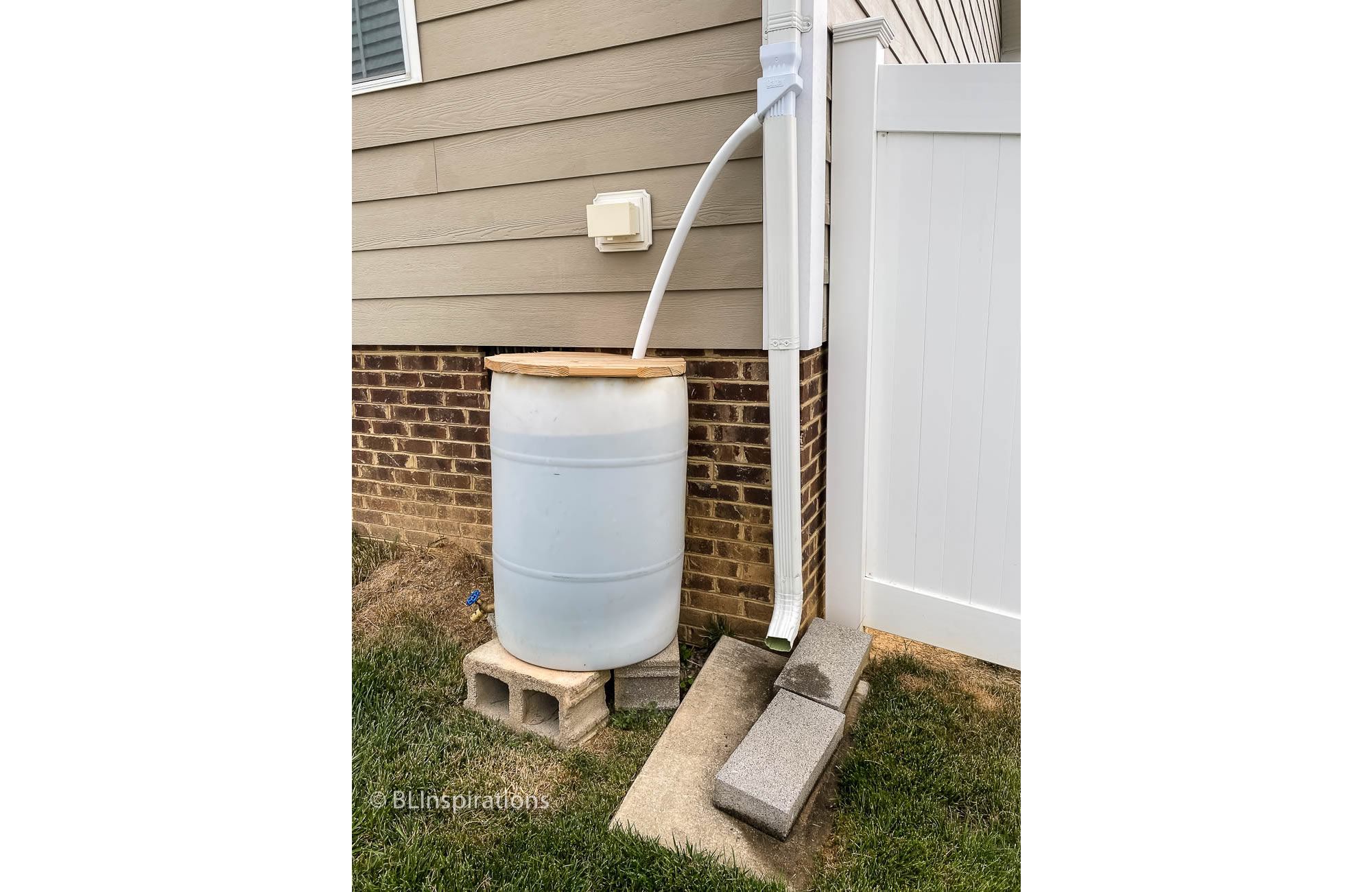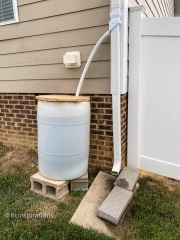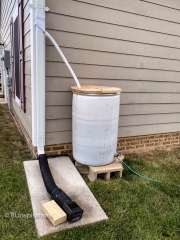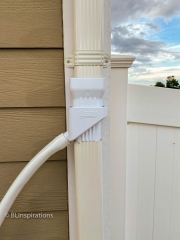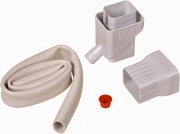Beverly especially enjoys gardening and appreciates the beauty of flowers. One of the constant tasks with gardening is watering the plants and flowers. Since we moved last January, our source of water is public water instead of well water. To reduce the usage of public water (which also saves money) Laurie installed two rain barrels to capture rain water from the rear house roof to use in the garden. The featured image shows the right side rain barrel. Rain barrels help conserve water in two ways: First, they capture water from a roof and hold it for later use such as on lawns, gardens or other plants. Second, collecting roof runoff reduces the amount of water that flows from your property into sewers and streams. In addition, rainwater contains oxygen and nutrients and is free from chlorine, ammonia, and other chemicals contained in tap water that can accumulate in the soil over time.
How much water in rain?
Every square foot of roof footprint (the horizontal area covered by the roof, not the area of the sloped roof) collects 0.6 gallons of water in a 1 inch rainfall. Our rain barrels collect water from the gutters servicing the roof at the rear of the house whose footprint is about 1150 sq. ft. which means a 1″ rainfall could provide about 690 gallons of water. Given that not all the water in the downspout is collected—I’ve seen estimates of 70% to 90% collected but our experience is it’s less than that—it’s still easy to fill several 55 gallon drums from a nice soaking rain.
Our Rain Barrels
Laurie made two rain barrels from plastic 55 gallon drums that originally contained disinfectant used for cleaning poultry houses. After cutting out the top and thoroughly washing them, he mounted a faucet at the bottom and fashioned a top from pressure-treated lumber. To collect the water from the downspout we used the MysticTM Rainwater Collection System by Oatey.© This system works using the principle that the water in the downspout flows mostly along the inside surface because of surface tension. The Oatey system is inserted into the middle of the downspout above the barrel. The upper part of the downspout fits into a collecting channel that connects to the tube leading to the rain barrel. If the rain water fills the barrel, it backs up into the channel and the rainwater just flows down the downspout normally. Unlike a rain water diversion system that uses a flap to direct the water to or away from the barrel, the center of the collecting channel is always open and connects to the lower part of the downspout so that any debris such as leaves and dirt that comes down the downspout will fall through. There is a stock image of the pieces of the Oatey system in the Additional Images section below.
Limitations and Improvements
We’ve already learned that these two rain barrels are not sufficient for the current hot dry summer—it’s too easy to drain them between very intermittent measurable rains in the summer. We’ve identified two other deficiencies: First, the roof areas that feed each rain barrel are not equal – the left side barrel captures water from about 40% of the roof area so it doesn’t fill as much as the right side barrel from a light rain. Second, the right side barrel is at the downhill side of the house so it’s too low to water the upper part of the garden by gravity. Our thinking at this time is to build a higher platform for the right side and add a second barrel to take advantage of the available water. The first image in the Additional Images section below shows the rear of the house with both rain barrels. You can see that the right rain barrel is nearly 3′ lower than the left rain barrel.
Additional Information
Oatey Mystic Rainwater Collection System: Amazon
Oatey Mystic Rainwater Collection System: Oatey
Additional Images
